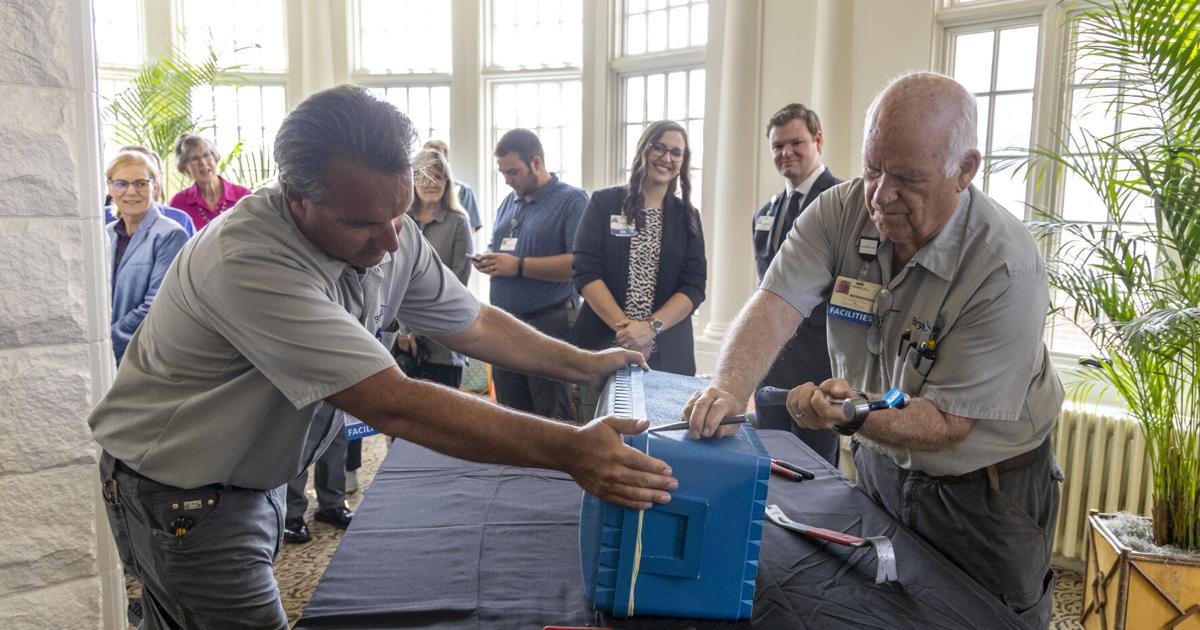By Google Gemini,Richard Harpin
Copyright cityam

If there’s one inevitable in business aside from death and taxes it’s that the CEO will always leave, so succession planning is essential. But why hire an expensive headhunter when the right person could already be in your boardroom? Asks Richard Harpin
As the new football season nears kick-off, I’ve been pondering that famous old adage about life’s inevitables. We all know about death and taxes. To which I’d add Newcastle United threatening to win the Premier League but never quite managing it. I hope this year they prove me wrong!
In business, there’s another inevitable and one which so many ignore: the CEO will always leave. So a robust succession plan is essential. Not just before he or she departs but once they’re appointed. It doesn’t matter how big or small your business, don’t be ill-prepared to replace the most important person you have.
And that replacement might be right in front of you. One of the most common subjects raised during my weekly workshops with entrepreneurs of growing businesses is whether succession plans should focus on internal promotions or evaluating external candidates. My advice is always the same – if you have a great business that’s been growing rapidly and has successfully evolved, it’s better to promote someone from within. However, the business may have outgrown your internal team’s capabilities, or you’re struggling and evolution has slowed down. In both those cases, you might need a new face to shake things up.
If you’re looking for an ‘insider’ CEO replacement, someone who knows the business intimately, look no further than the boardroom. Why hire an expensive headhunter when the ideal candidate could be already there?
Just under two years ago, Allison Kirkby moved from being a non-executive director at BT to taking over as CEO. When she joined the share price was just over £1 and, since her appointment 18 months ago, the stock has doubled.
Admittedly, it doesn’t always work. Debra Crew was, on paper, the perfect internal candidate to replace Sir Ivan Menezes at Diageo but after a 40 per cent dip in the share price, her stint recently came to an end after just two years. While the board casts around for a replacement, her CFO, Nik Jhangiani, has been hurriedly appointed interim CEO. He might get the job full-time but the sense of uncertainty is not helping one of the FTSE-100’s titans.
Then there’s advertising giant WPP, which appointed internally when Sir Martin Sorrell was suddenly ousted. However, Mark Read never quite convinced, and now the board has appointed one of Microsoft’s most senior executives, Cindy Rose, in a bid to inject some much-needed energy. A potentially perfect blend of external (Cindy’s also been a key leader at Disney, Virgin and Vodafone) and internal (she has sat on WPP’s board for six years). We won’t know for at least 6-12 months about her impact but with the share price less than half what it was when Sir Martin left, she has her work cut out.
Of all the decisions a company’s board of directors makes, having the right CEO leading a business is the most important. Get it wrong and employees and customers will suffer, senior talent will jump ship and shareholder value will be affected. The longer a succession drags on, or the wrong CEO is retained, the greater the impact on growth and future value creation.
You want as little turmoil as possible, so recruiting CEOs from the board can be both swift and decisive. It works for public companies which is why private ones also need a good selection of non-executive directors. If you’re running a private company and don’t have any non-execs, I’d really recommend you recruit one or two. They can add real value.
Perhaps ex-CEOs who have that experience to understand what it takes to be a success. Or appoint your most promising executives to the board to give them more access. Not only does that allow directors to see likely candidates in action, but it better prepares those individuals to take on the top job.
You’re not just looking for ability but character too. In my book How To Make A Billion In nine Steps, I’ve outlined what, in my experience, are the essential traits for a leader. In particular, courage. You want leaders who won’t hesitate to make the right decisions and take appropriate risks. They need humility to know their limits and surround themselves with people who are better than them at certain skills. The best CEOs are incessantly curious, have integrity and a low ego, don’t mind being challenged, take bad news on the chin, will listen to others and sing their praises. They also need to be non conformists, willing to carve out their own route with grit, determination and resilience.
Lessons from Greggs
That perfectly describes former Greggs CEO Roger Whiteside who was a non-exec at the company before taking the top job. In 2013, when Roger replaced outgoing CEO Ken McMeikan, he had already been on the board for four years. That familiarity with the business lay the groundwork for the winning format he created and which Roisin Currie as his successor has taken to the next level.
Prior to Roger’s appointment, Gregg’s had three store formats: a bakery business, coffee shops and hot food to go. Roger jettisoned the bakery, correctly deciding that low margin loaves of bread couldn’t compete with major supermarkets. Then he set about creating a revamped food-to-go business, including coffee, at really competitive prices relative to high street competitors such as Pret, Starbucks and Costa. The company has opened more than 1,000 outlets in the past decade to take its total to more than 2,500, and it now has a market cap of more than £1.7bn.
When he was coming to the end of his tenure in 2022, Roisin was ready to step up to the top job because she had spent 12 years at the company in a succession of demanding roles.
So if your preference is to hire internally, put in place a proper executive development programme to prepare potential successors over a number of years. It’s almost like creating a CEO factory where leadership skills across the business can be developed and then transferred into different environments. Put the CEOs-in-waiting in charge of new projects so strengths can be assessed and honed. Have strict performance metrics so you can benchmark them with each other and potential external candidates.
Capabilities aren’t just about what to do, they’re also about what not to do and someone with boardroom insight often sees that faster than an outsider would. It’s one of the reasons Amanda Blanc has been so successful at Aviva. The company originally promoted internal candidate Maurice Tulloch but, a year in, it wasn’t working out. So Dame Amanda, who was already on the board, was appointed and she immediately sold eight poorly-performing businesses to focus on the UK, Ireland and Canada where they could be a top three player. She then sped up the pace of the company’s evolution by expanding its motor insurance business via the acquisition of Direct Line for £3.7bn. When she took over, Aviva shares were worth about 260p, they’re now around 615p.
Remember, the inevitable will happen, so make sure you’re ready for it. That includes having a comprehensive transition process to help with onboarding, which is especially important given that most CEO appointees have never served in a chief executive role before.
However, if you’ve already watched them close-up in the boardroom, you’ll at least be better prepared.
Richard Harpin is the founder of Homeserve, Growth Partner and owner of Business Leader



